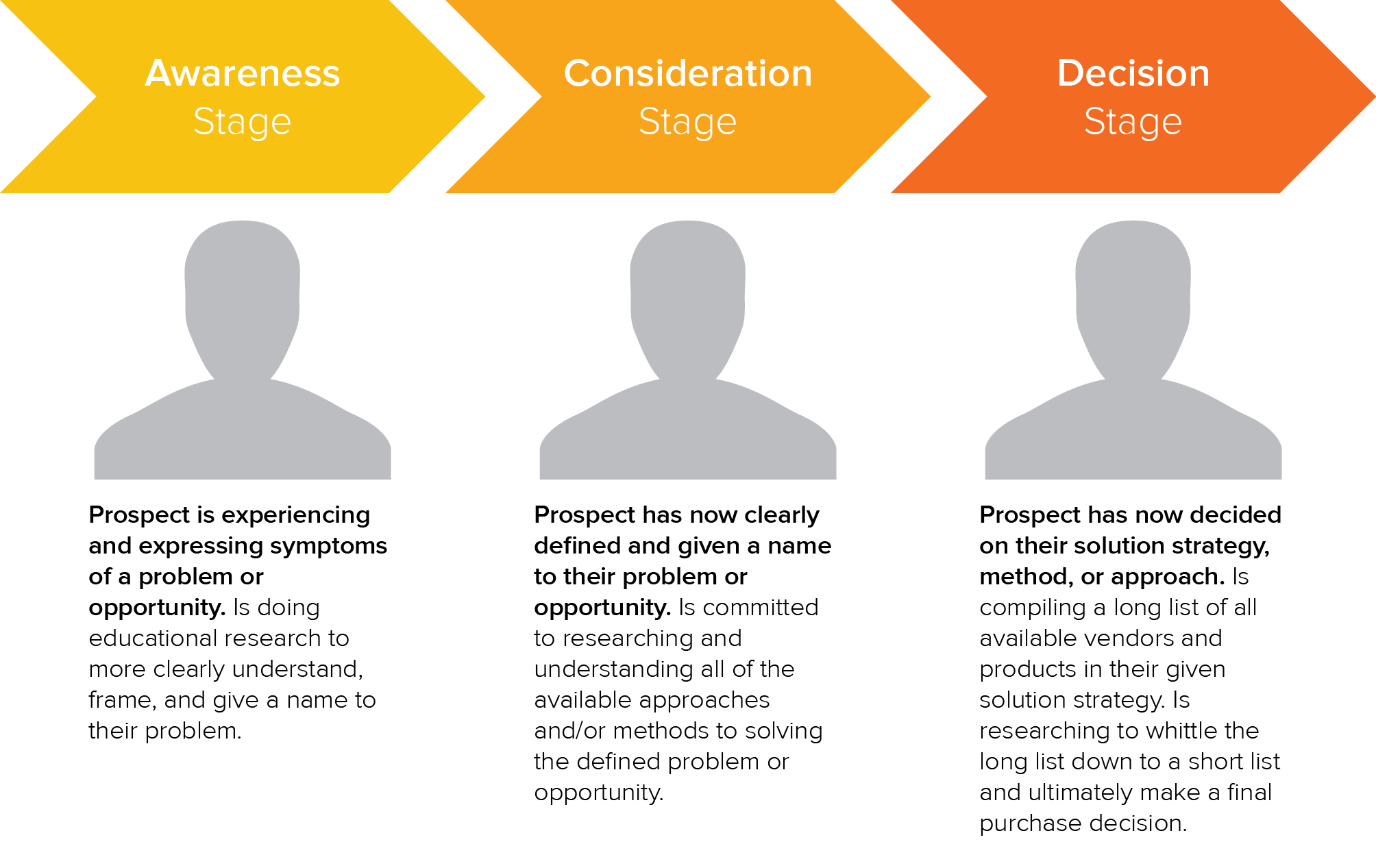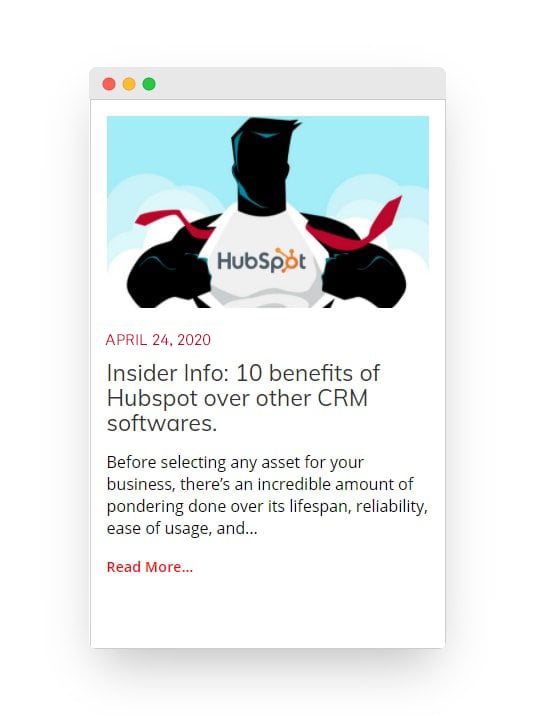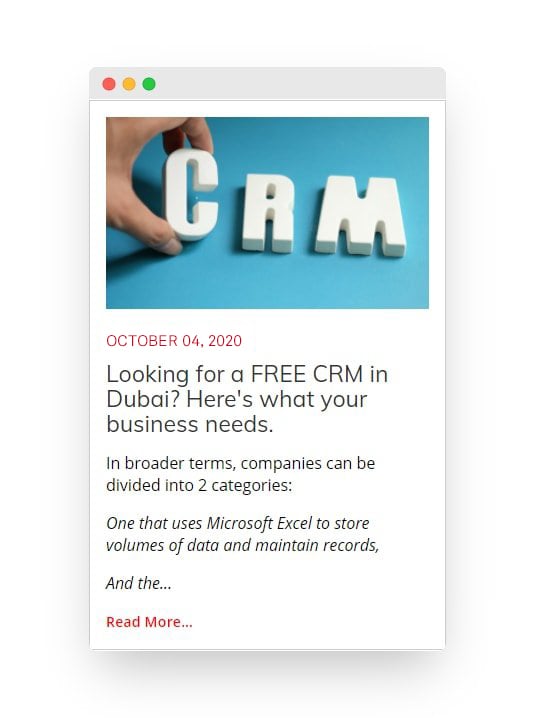
Let’s start with a few questions:
- Are you guilty of creating content without a purpose?
- Is your content strategy based on random assumptions and intuition?
- Can you explain the relationship between each content piece and its role in your content marketing strategy?
- Is your content creation process the equivalent of shooting arrows in the dark, hoping that some website visitor takes interest and contacts you about your services?
- Are you confused about creating the right type of content for the respective stage of your potential customer’s lifecycle journey?
If your answer to any (or all) of the above questions is YES, then this article is your life-saver.
Here, you’ll learn a simple, yet extremely underutilized content creation system that’ll wash off all specks of uncertainty from your content marketing strategy.
This content creation strategy works best for B2B industries where there’s a significant amount of research and nurturing involved before a sale.
With 70% of marketers actively investing in content marketing, it’s crucial to adopt a strategy that works, instead of letting your gut guide your business.
Here’s the thing:
You might be creating content in various forms:
Articles, ebooks, videos, whitepapers, downloadables, webinars etc.

Your content may be great, but it’s misguided.
It lacks the direction required to serve its purpose.
Honestly speaking, what’s the point of creating content when your target audience is not taking the desired action?
What I’m trying to highlight here, is the random approach to content creation that most businesses undertake.
The purpose of business content creation should be to convert visitors into leads, then into customers, and then into brand advocates.
As you read further, you’ll understand the logical secret of creating content (of any format) and the technique of grading it on a 3-point scale.
This isn’t a hard & fast rule that’s inflexible and must be followed to the T.
After all, every company has a different set of circumstances.
Even if you’re in the B2C sector, the simplicity of this triple-grading system will help you align your content goals properly.
By the end of this article, you’ll get a better comprehension of content marketing in practice, along with an actionable framework to create new content as well as repurpose your existing content assets for better results.
Before we get into the strategy, let’s quickly revisit the 3 stages of the buyer’s journey, or the customer lifecycle (whatever you call it)

The buyer’s journey that’s explained succinctly above is directly related to the 3-point content creation strategy.
In other words, content is graded based on the stage of your prospect in the buyer’s journey and its relevance to them at that moment.
The idea is to score each content idea on a scale of 1-3.
Let’s understand each grade in a little more detail further:

1 means that the content is highly relevant to your target audience, but doesn’t actually sell your solution.
The purpose of this type of content is to educate your prospect and help them understand their pain points better.
Apart from focusing on their pain points, you could also introduce new ideas and concepts that’ll pique their curiosity.
Remember - the point is not to be salesy, but to be respected as a credible source of information.
After all, no one wants to be sold explicitly without being comfortable enough about the product or service.
This content piece, that you’ll grade as 1 will be placed at the top of your marketing funnel - attracting attention and drawing crowds towards the path of curiosity and self-education.
Content at this stage will hardly talk about your company or services.
Instead, it will position you as the leading authority on topics that matter the most to your buyer personas.
Once you’ve brought them to the top funnel, the next step would be to move them to the middle funnel, i.e. number 2

At this stage, you’ll create content that suggests the usefulness of your product or service without being too salesy about it.
In other words, your company/product/service makes it easier to complete the task of the article.
If your article isn’t about tasks, then it could be about solutions, challenges, innovations that your company is a part of, and so on - the sky is the limit.
The key objective here is to focus on building a reputation for your product or service, without rubbing it in the face of your prospects.
Let’s take the example of a company that sells time-tracking systems for employees.
A good fit for content at this stage (2) would be something along the lines of:
“How to improve the productivity of your team using time-tracking systems”
As you’ll notice, the emphasis is given on improving employee productivity, while softly selling the product - which is a time-tracking system for employees.
This blends in perfectly with my initial statement which was -
The content piece makes it easier to complete the task of the article.
Once you’ve gotten your potential leads in the middle of your funnel (stage 2), it’s time for content that’s graded 3.

At this stage, your content will be primarily salesy and contain details about your product and service.
Don’t confuse this piece of content with your website’s product/service page.
You’ll still add value, even at the bottom of the funnel.
Your grade 3 content will essentially communicate, “You must use our product/service to meet the purpose of this article”.
Other iterations at stage of content can be:
“Benefits of choosing us over others”, or
“How our product/service can help you increase sales by x%”
Feel free to add facts, case studies, testimonials, competitor analyses, and other bottom of funnel content at this stage.
If you implement this 3-Point Content Creation Strategy properly, you should successfully be able to convert first-time website visitors into high-quality leads.
Simultaneously, you’ll be building a reputation in your industry by creating helpful content that gets linked by relevant websites, thus improving your SEO rankings too.
Now that you’ve understood the 3-Point Content Creation technique, let’s analyze 3 examples of content we created based on this model.
As you might (or might not) know, we’re a HubSpot partner agency in Dubai.
To push this service offering, we created multiple articles on the topic of CRM software to educate businesses on all facets of CRMs.
Example Content 1:
This content piece was graded number 1, which, as you’ll recall, is all about educating your target audience on the chosen topic.
We discussed the types of CRM softwares and the basic knowledge you need to identify the right one for your business.
Example Content 2:
This article was graded number 2 on our content creation system.
Here, we listed down the benefits of HubSpot over other CRM softwares and how it’s helpful for businesses.
As compared to the previous article, we were slightly salesy but not aggressive enough as per our strategy.
Example Content 3:
Being aptly graded number 3 on our content creation score, this article actively promotes HubSpot, it’s features, benefits and so on - essentially everything prospects need to know before deciding to book a consultation or demo.
I hope these 3 examples helped you get some actionable perspective behind the idea of this article.
Additional Reading:
- 15 Most in-demand Marketing Skills to Grow Your Career & be Future-ready
- 5 Stages Of The Blog Sales Funnel And How To Use Them
- Tried & Tested: 20 Content Ideas for B2B Social Media
- Running a Super-Effective Inbound Marketing Campaign - The Ultimate Guide
- Inbound Marketing vs Content Marketing: A Simple Guide to Understanding Both









